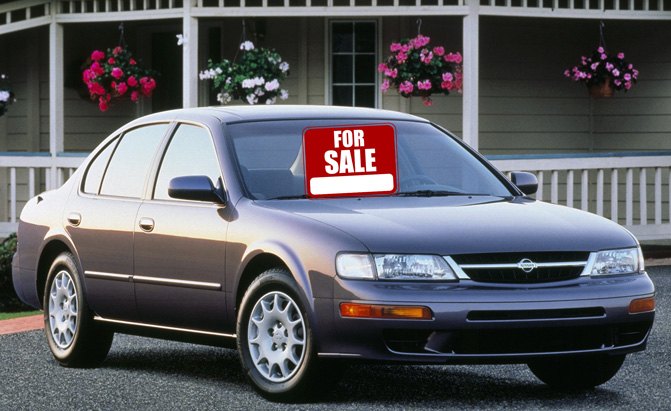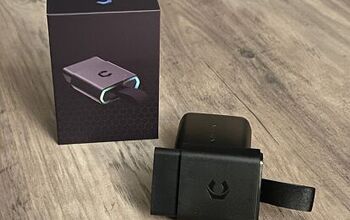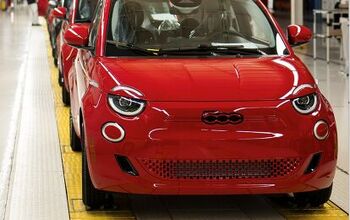How to Test Drive a Used Car Like a Pro

Uncertainty is a key source of stress in the used-car shopping process, and smart shoppers take effective steps to avoid it. Recently, we published this story on how to test-drive a new car like a pro.
Some of the points within are highly relevant to the used-car shopping process, too—and especially those points concerned with careful planning, taking your time to research and compare models, confirming your priorities with a firm budget, and a list of must-have and nice-to-have features.
As your potential used car isn’t new, may not be covered by a warranty, and may have been maintained and cared for perfectly or poorly, an additional layer of checks and considerations is advised when shopping pre-owned—whether at a dealership, or privately.
Here are a few tips on how to test drive that potential new-to-you ride like a pro, for maximum peace of mind.
Plan an Inspection
Whether the seller is a used car dealer or a private individual, confirm that you’ll be able to take the vehicle to a mechanic of your choosing if you short-list it for consideration. With a skilled eye, a mechanic can find hidden issues, problems, or trouble signs in a used vehicle quickly, and on the cheap, in a way that kicking tires simply can’t.
If you want to eliminate uncertainty about the mechanical condition of a used vehicle, a mechanic is your best friend, so ask the seller if you’ll be able to take the ride to your mechanic for a pre-purchase inspection, or if they’d be willing to meet you there. Usually, a pre-purchase inspection costs $50-$75, and takes an hour or less. It can reveal hundreds or even thousands of dollars worth of potential issues, or hopefully, none at all.
PRO TIP: Don’t be too impressed if a used vehicle is sold ‘safetied’ or ‘certified’. In most cases, a safety certificate is little more than a guarantee that the vehicle has met a very minimal standard of mechanical fitness on the day it was checked, and that it probably won’t fall apart as it rolls down the road. A safety or certification is in no way a warranty, nor should it be taken to mean the vehicle is in great shape or free of problems.
Healthy Suspension Doesn’t Make Noises
Once you’ve confirmed that the climate control fan and stereo system are in proper working order, turn both off and drive in silence down a bumpy road. Train your ears beneath the car: you’re listening for clunks, pops, snapping or banging sounds as the suspension deals with rough and uneven road surfaces. Healthy cars don’t make unwelcome noises from beneath on rough roads, so if you hear any, the vehicle in question is likely in need of some attention to its suspension components. Worn ball joints, tie-rod ends and bushings are common sources of suspension noise, so be on the lookout.
PRO TIP: If you’re test driving a truck or a rear-wheel drive car, coax noise from a potentially-worn rear differential by turning in a tight, complete circle, at a low speed. Any chattering, grinding or groaning sounds from the rear of the vehicle, possibly accompanied by the sensation of rear wheels skipping over the surface beneath, could be signs of a worn differential. Further, while stationary, be sure to turn the steering wheel fully from one side to the other. Clunking or grinding sounds, possibly accompanied by a notchy feel to the steering wheel, could indicate worn strut-mounts. A sound like an overloaded shop-class wood planer, similar to a high-pitched whine, likely means the vehicle’s power steering pump needs a check, too.
Scan it
If there’s something wrong with the vehicle’s engine sensor network, or the engine itself, there will be a Check Engine Light, right? Wrong! A multitude of electronics issues can be detected by a vehicle computer system, but won’t cause the Check Engine Light to turn on. Translation? Have the ECU scanned, regardless. Doing so gives you a window into the health of the engine’s sensor network and electronic systems, and can reveal a potential problem hiding in wait.
PRO TIP: Buy your own On Board Diagnostics (OBD) scanner. They’re cheaper than ever, with some available on eBay from $20. A module plugs into the vehicle OBD port, and connects via Bluetooth to your Smartphone. You can read trouble codes on virtually any used car you’re shopping for in seconds, and it’s a handy thing to keep in your garage, too.
Check the Consumables
Tires. Brake pads. Rotors. Filters. Cars have many parts that need periodic replacement, and are largely considered to be consumable. A check of the tires, brakes, filters and other consumable parts can reveal what, if any, costs you’ll have to incur to replace them in the near future, and can be helpful in pricing negotiations.
PRO TIP: Considering a used performance vehicle? Approach it assuming that the tires and brakes will need replacing, until you or a mechanic confirm otherwise. Bringing a tire tread depth gauge along as you shop, and knowing how to use it is a good idea too.
Timing Belt
Some cars have a timing belt inside their engine, which requires periodic replacement at a pre-set interval, before it fails. If it isn’t replaced, and it does fail, catastrophic engine failure is possible, which will turn your engine into metallic spaghetti, and ruin your bank account. Remember that replacing a timing belt is cheaper than replacing an engine—so before you buy, determine whether the car in question has a timing belt, and when that belt was last changed. Seek documentation as proof, and assume the seller would like it if you, not them, had to foot the bill to replace it. If the timing belt is overdue for a replacement, or the seller can’t prove that the timing belt is still within its service life, plan to have it addressed immediately, and ideally before your purchase.
PRO TIP: Calling around for prices to change the timing belt in your ride? Be sure to try both the vehicle dealer, and a few private shops. Pricing for a timing belt replacement job can vary widely, so be sure to shop around.
Get the Extended Warranty, or Not
Is the used ride you’re considering available with an extended warranty? Once you get the literature, take the info with you to determine what it covers, and what it doesn’t, and make a decision after some contemplation. In general, and varying widely based on shopper needs, habits and budgets, an extended warranty often makes the most sense on a complicated, pricier-to-fix model—like a modern truck, SUV or luxury sedan. Research common problems with the vehicle you’re considering, and reliability reports, to help guide your decision, as extended warranties can cost a pretty penny, though repairs can cost even more.
PRO TIP: Consider the price of the extended warranty, and consider opting out of it, but saving that amount of money in your bank account, in case of an issue. This way, you’ve got some extra funds on hand in case of a problem, and you’ve still got some extra funds on hand if there isn’t one.

Justin Pritchard, an award-winning automotive journalist based in Sudbury, Ontario, is known for his comprehensive automotive reviews and discoveries. As a presenter, photographer, videographer, and technical writer, Justin shares his insights weekly through various Canadian television programs, print, and online publications. In 2023, Justin celebrated a significant milestone, airing the 600th episode of his TV program, AutoPilot. Currently, he contributes to autoTRADER.ca, Sharp Magazine, and MoneySense Magazine. His work as a technical writer, videographer, presenter, and producer has been recognized with numerous awards, including the 2019 AJAC Video Journalism Award and the 2018 AJAC Journalist of the Year. Justin holds a Bachelor of Commerce (Hons) from Laurentian University, which he earned in 2005. His career in automotive journalism began that same year at Auto123.com. Since then, he has written one of the largest collections of used car buyer guides on the internet. His passion for photography, nurtured from a young age, is evident in his work, capturing the scenic beauty of Northern Ontario. Living in a region with a particularly harsh winter climate has made Justin an expert on winter driving, winter tires, and extreme-weather safety. Justin’s significant achievements include: 2019 AJAC Video Journalism Award (Winner) 2019 AJAC Road Safety Journalism Award (Runner-Up) 2019 AJAC Automotive Writing (vehicle review topics) (Winner) 2019 AJAC Automotive Writing (technical topics) (Winner) 2018 AJAC Journalist of the Year You can follow Justin’s work on Instagram @mr2pritch and YouTube @JustinPritchard.
More by Justin Pritchard





































Comments
Join the conversation